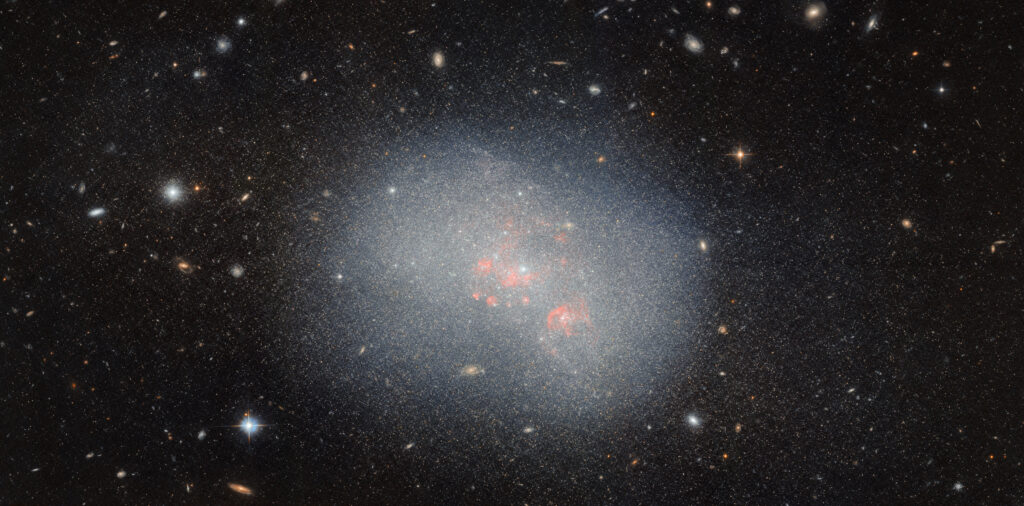Working with the Hubble telescope astronomers, published a new image. It shows the dwarf irregular galaxy NGC 5238.

NGC 5238 is located 14.5 million light-years from Earth toward the constellation Canes Venatici. It has an unusual appearance and resembles a globular star cluster rather than a classical galaxy. However, behind this unassuming facade lies a complex structure that is the subject of much research. Astronomers speculate that NGC 5238 may have collided with another galaxy as recently as a billion years ago. The tidal distortions in the shape of NGC 5238 provide evidence for this event. When the two galaxies interacted, their gravity caused distortions in the distribution of stars.
Since there is no galaxy nearby that could cause such distortions, astronomers believe NGC 5238 has absorbed a smaller companion galaxy. They are looking for traces of the engulfed galaxy by scrutinizing the population of stars in NGC 5238. One sign of it may be groups of stars with properties different from those of most stars, indicating that they originally formed in a different galaxy. Another sign is a sudden burst of star formation that occurred around the same time as the merger. Hubble data from analyzing this image will help astronomers determine the history of NGC 5238.
Despite their small size and unremarkable appearance, objects like NGC 5238 often shape our understanding of galaxy formation and evolution. According to one of the main theories of galaxy evolution, galaxies form “from the bottom up” in a hierarchical manner. Star clusters and small galaxies were the first to form from gas and dark matter. Gravitationally, they gradually gathered into galactic clusters and superclusters, which explains the shape of the largest structures in the Universe today.
Events like the merger of the dwarf irregular galaxy NGC 5238 with an even smaller companion may have started the process of galaxy assembly in the early Universe. Hubble observations can therefore help test some of our most fundamental ideas about how the Universe evolved.
According to esahubble.org


